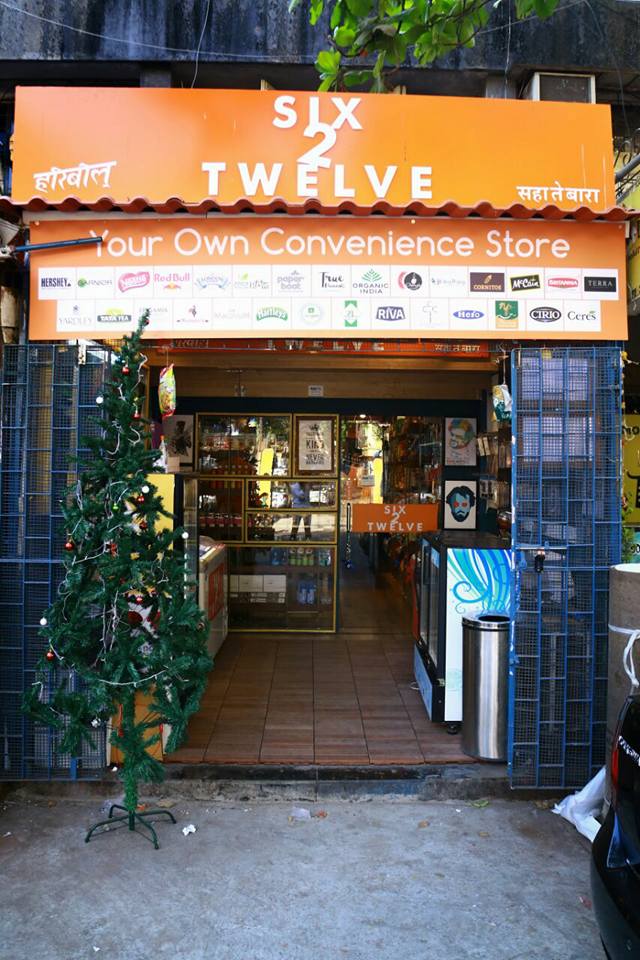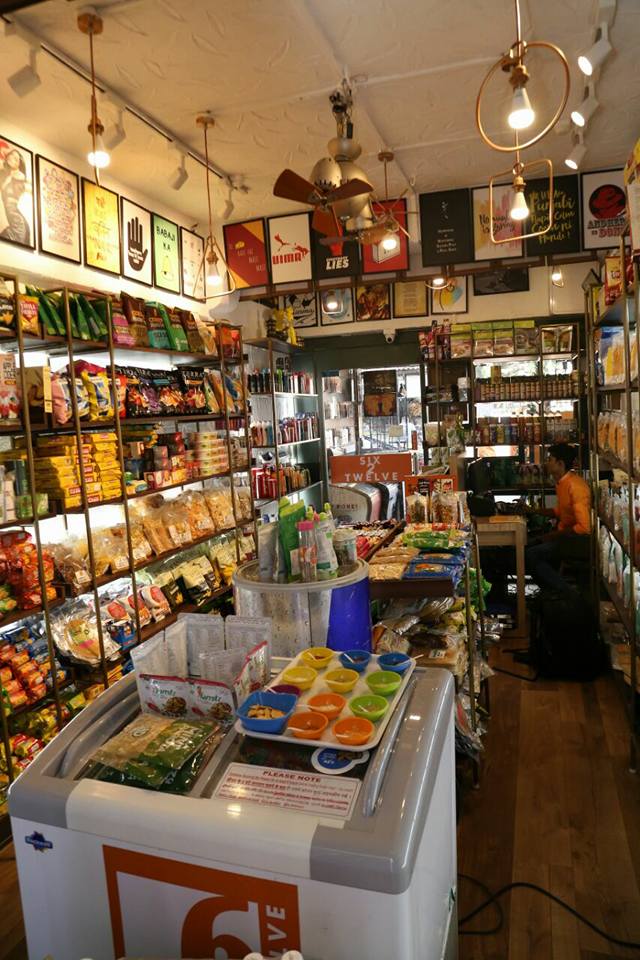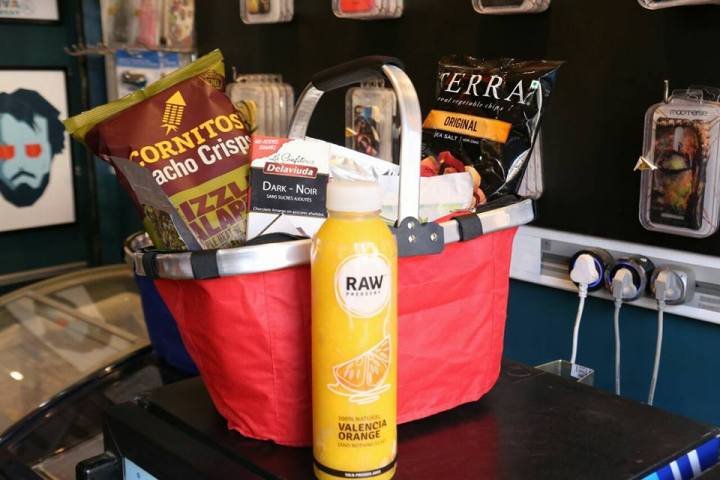SAGAR MEDIA INC
ONLINE MEDIA
EUBIQ’S PRODUCTS & SIX2TWELVE CONVENIENCE RETAIL STORE







UNICEF: MORE THAN 40,000 CHILDREN AT RISK IN SYRIA’S RAQQA
The UN’s children agency is warning that the fight for the Islamic State group’s stronghold of Raqqa in northern Syria is threatening the lives of more than 40,000 children. In a statement Friday, it says the violence has resulted in massive displacement in and around the city, with some 80,000 children now internally displaced and living in temporary shelters and camps. US-backed Syrian forces launched their attack on Raqqa earlier this week and US-led coalition airstrikes have intensified. “An estimated 40,000 children remain trapped in extremely dangerous conditions in Raqqa. Many are caught in the crossfire,” said UNICEF regional director Geert Cappelaere. He called on all parties to provide safe passage to those wishing to leave the city.
GERMANY’S SIGMAR GABRIEL PROMISES MILLIONS ON SURPRISE VISIT TO LIBYA
The German foreign minister has announced extra aid to improve conditions at refugee camps. He warned of growing instability and urged warring parties to overcome their differences and support the UN-backed government.
German Foreign Minister Sigmar Gabriel on Wednesday made a surprise visit to Libya to announce a new tranche of aid to the conflict-ridden country.
Berlin will provide 3.5 million euros ($3.9 million) to Libyan authorities to improve conditions at refugee camps in the North African country, Gabriel said. The money is expected to complement relief funds provided by Germany aimed at easing Europe’s migration crisis.
“It is, therefore, our goal, together with the Libyans, to resist the instability that has arisen from the absence of established structures,” Gabriel said. “Concrete progress is urgently needed.”
Since the closure of the so-called Balkan route at the beginning of 2016, more people have tried to cross the Mediterranean Sea and reach Europe, often leaving from Libya.
Nearly 70,000 migrants, many of them fleeing conflict and extreme poverty in the Middle East and Africa, have made the perilous journey so far this year, of which 80 percent arrived in Italy, according to data provided by the International Organization for Migration (IOM).
European authorities have attempted to impede irregular migration to the bloc by warning would-be migrants about the dangers of the route across the Mediterranean. More than 1,600 migrants have died in 2017 attempting the voyage, IOM reported.
Calls to overcome rivalry
Gabriel called on rival Libyan authorities to overcome their differences through dialogue. Libya has three rival governments, of which only one is recognized by the United Nations as the legitimate government.
Germany’s Gabriel said conflicting parties should abide by UN-brokered agreements signed in 2015, which effectively established the Government of National Accord led by Prime Minister Fayez al-Sarraj.
Libya plunged into chaos in 2011, when anti-government protesters demanded dictator Moammar Gadhafi to step down, prompting a brutal crackdown by regime forces. NATO responded by leading an operation against the government.
Within two weeks of Gadhafi’s assassination at the hands of Libyan rebels, NATO ended its intervention.
Since then, warring parties have attempted to claim power in the North African country, leading to instability and the eventual rise of the so-called Islamic State (IS) militant group in 2014. media agencies -dw.com
CONFLICT IN CENTRAL CONGO FORCES 150KS CHILDREN OUT OF SCHOOL
Tens of thousands of children in central Democratic Republic of Congo are missing out on school amid violence between militia fighters and security forces and attacks against civilians, the UN children’s fund (UNICEF) said on Friday. Hundreds of people have been killed and more than a million displaced in Congo’s Greater Kasai region since fighting broke out last August between a local militia and government forces. The violence has kept at least 150,000 children in the region out of the classroom, while more than 600 primary and secondary schools have been damaged by attacks, UNICEF said. Ethnic violence in Congo, Africa’s second-largest country, has spread and worsened since December when President Joseph Kabila refused to step down at the end of his mandate.Media agencies
ETHIOPIA EMERGENCY DROUGHT AID TO EXHAUST NEXT MONTH
Ethiopia – This week, the UN Migration Agency (IOM) assisted 80 newly arrived Somali refugees with emergency transportation from the Ethiopia-Somalia border entry point to Kobe refugee camp in Dolo Ado, in the Somali region of Ethiopia. This latest assistance brings the total number of Somali refugees helped in the border region to 5,397 thus far in 2017. Over 50 per cent of the new arrivals are female while over 90 per cent are under the age of 18.
The latest movement is part of IOM’s emergency transportation assistance provided to newly arriving refugees across Ethiopia, including Somali, South Sudanese and Eritrean nationals. Since September 2016, over 95,000 refugees have been assisted with safe and dignified emergency transport in the Somali, Gambella and Tigray Regions of Ethiopia.
In addition to the severe drought impacting Somalia, the continuing conflict in the country contributed to a surge in new refugee arrivals to Ethiopia in 2017.
Some 2,855 individuals arrived in January alone, with arrivals surpassing the 2017 planning figure of 3,000 individuals by mid-February.
While new arrivals have declined since March, humanitarian agencies anticipate a likely increase in new arrivals during the coming months, given the forecast of significantly below-average April to June rains and the ongoing conflict in Somalia.
Sixty-year-old Kula Ali arrived on the Ethiopian border with his wife and seven children. “We left Somalia and crossed the border because of the drought,” he explained. “It took us two days by minibus to get to the border. We had to pay a big amount and the vehicle was full of people and we only brought a small amount of food and water with us,” Kula Ali said of the exhausting journey.
IOM’s transportation and relocation assistance ensures refugees can access life-saving services in the camps including food, WASH, health, and protection assistance. IOM, in coordination with ARRA, UNHCR and humanitarian partners, is engaged in logistical planning on routing, safety, security, and ensuring the protection needs of refugees are considered during transport. Prior to travel, IOM conducts pre-departure medical screening (PDMS) to ensure refugees are fit for the journey to the camps.
Medical escort assistance is provided to pregnant/lactating women, unaccompanied children, people with disabilities, the elderly and those with chronic medical conditions.
Joséph Nyangaga, IOM Dolo Ado Sub-Office Head, stated that “IOM is scaling up its efforts alongside the drought-stricken Ethiopia-Somalia border to continue transporting Somali refugees in a safe and humane way to refugee camps, where they are provided with lifesaving services.”
Thus in lieu of such developments the Ethiopia’s government is warning it will run out of emergency food aid starting next month as the number of drought victims in the East African country has reached 7.8 million. Ethiopia’s disaster relief chief Mitiku Kassa told The Associated Press that the country needs more than $1 billion for emergency food assistance. Seasonal rains have been critically small and local cattle are dying. The number of drought victims has risen by two million people in the past four months. The risk of an acute food and nutritional disaster is “very high,”‘ the disaster relief chief said.
Along with the drought, Ethiopia also faces an outbreak of what authorities call acute watery diarrhea, though critics have said the government should call it cholera instead. Media agencies
CHINA HELP TO MYANMAR AFTER PLANE CRASH
China will offer support and assistance for Myanmar’s follow-up efforts after a military plane crashed off the Southeast Asian country’s southern coast with 122 people on board, state media said. China, as a friendly neighbour, shares Myanmar’s sorrow over the incident, President Xi Jinping told his counterpart U Htin Kyaw in a condolence message, state news agency Xinhua said late on Friday. “Xi mourned the dead and extended sincere sympathy to the government and people of Myanmar, especially the families of the victims,” the agency added.
The aircraft, a Chinese-made Y-8-200F transport plane, lost contact 29 minutes after takeoff on Wednesday, while at a height of 18,000 feet (5,485 metres), about 43 miles (70 km) west of the coastal town of Dawei, the Myanmar military has said Media agencies
CAIT STRONGLY PITCHED FOR 9 MONTH INTERIM PERIOD UNDER GST

On the eve of crucial meeting of GST Council scheduled to be held tomorrow at New Delhi for approval of GST rules and rate slabs, the Confederation of All India Traders (CAIT) has strongly pitched for an interim period from 1st July,2017 to 31st March,2018 during which no penal action should be taken against traders for any procedural lapses. The preparedness at the level of small businesses is at a very low stage and about 60% of traders across Country have yet to adopt digital technology for GST compliance and as such interim period will give ample opportunity to the traders to understand GST Law, Rules & Regulations in its true spirit and also compliance related issues which we may occur from time to time during GST operation in the Country. Of course, CAIT is not averse for taking action against any habitual offender-said Mr. Praveen Khandelwal, Secretary General of CAIT today.
The CAIT has already submitted its representation to Prime Minister and Finance Minister urging for declaration of an interim period.
CAIT National President Mr. B.C.Bhartia said that there are strong overlaps with the needs of millions of consumers all through the country as far as fitment of GST rates are concerned.It has, however, perhaps inadvertently resulted in bracketing items pertaining to either mass consumption or similar to raw material items, daily use products, health or food items in slabs which are higher than where they should be placed. This may augur well for revenues but may fly contrary to the Government’s larger public policy and objective of enlarging the scope of tax net in the Country. In absence of any direct inter-action with the trading community, several confusions are being occured due to unauthorised or misleading propaganda about GST.
With job creation perhaps being the single most important contemporary challenge infront of the Government, it’s only prudent that the legitimate concerns of the 5.7 cr strong trading community in India be looked at and addressed. Infact, there are genuine livelihood concerns involved which should be taken care of before a tectonic policy shift such as the transition to the GST regime can be actualized.
GDP GROWTH: ‘MIRROR, MIRROR ON THE WALL’ RAJIV KUMAR
Dear Mr. Sagar
My article titled ‘Mirror, Mirror on the Wall’ appeared on Edit Page (page no. 16) of the Economic Times on 8th June 2017. The link to the article is https://epaperlive. timesofindia.com/ETE/DEL/ 20170608#display_area
I am also pasting below the complete version of the article as ET could not carry the table that is an important part of the article because their op-ed page format does not permit tables. Hope you will enjoy reading it and as always your feedback is most welcome.
Rajiv
GDP GROWTH: ‘Mirror, Mirror on the Wall’
RAJIV KUMAR
Having just returned from a week in Italy meeting investors, academics and officials, I find the gulf between the foreigners’ perception of India’s economic story and that of domestic commentators like Mr. Palaniappan Chidambaram (PC, Indian Express, 4th June) most perplexing. Could it be that PC and his ilk are focusing excessively on the here and now, while foreign investors and domestic stock markets are looking more at what is unfolding and not the past?
For the record, GDP growth in Q4 declined to 6.1% and GVA (which is GDP minus taxes) growth fell correspondingly to 5.6%. It is perhaps worth noting that in Q-4 of 2013-14, UPA’s final year and with PC as finance minister, economic growth was lower with GDP at 5.8% and GVA at 5.3%! It is also patently wrong to assert (Mihir Sharma in Business Standard, 5th June) that NDA inherited an economy on the rise. Quite the contrary. Quarterly GVA growth rate in 2012-13, the penultimate year of UPA, ranged between 4.1% (Q-4) and 6.2% (Q-2) with GVA growth averaging merely 4.8%. Yes, it did improve in the first three quarters of 2013-14 but then plummeted to 5.3% in the last quarter. These represented a major decline from an average of 8.3% during 2003-2011 and is certainly not indicative of an economy in robust health.
Admittedly, GVA growth rate in 2016-17 (FY17) at 6.7% is a full 1.2% lower than in the previous year at 7.9% in 2015-16 (FY16). It should, however, be pointed out economic growth in FY 17 was still higher than in the last two years of the UPA. Also it is quite dishonest to attribute all of this 1.2% decline to demonetization because it is clear that economic slowdown had started in the first half of FY16 with quarterly growth rates sliding down to 7.2% from 8.7% in the last quarter of the previous year. Therefore, demonetization’s impact can at best be seen as a decline of 0.5% in GVA growth. This is well below PC’s forecast of a decline of between 1-1.5% of GDP. Sorry PC, but no cause for self congratulation on this account. In fact those who forecast a 2% decline in GDP growth or an economy being pushed into an unending recession, should honestly recant. Not that it matters to Mr. Modi who, with an approval rating of more than 80%, sits pretty for 2109 elections.
It is quite ironic to see PC and others going on about the irrationality of demonetization. It has the approval of more than 65% of the population and won UP hands down for Mr. Modi. Quite clearly, for the large majority of Indians and economists (thankfully not included in PC’s list of his tutors), a 0.5% decline in GVA growth rate for one quarter, has been well worth the cost for: strongly signaling zero tolerance for black money; reducing the role of cash in the economy; accelerating the formalization of the tax evading informal economy; and promoting digitization. 18 lakh bank accounts are reported to have received an average of Rs3.3 crore in dubious deposits. This has brought Rs 5.4 lakh crore of ‘undeclared income’ in the cross hairs of tax authorities. A fiscal windfall gain may still happen, stubborn, irrational denial notwithstanding.
Hard data (see table below), reveals that many leading indicators of economic activity in Q-4 of FY17, the worst performing quarter under Modi, are in better shape than in 2013, the last year of UPA II.
The story in short is that with leading indicators pointing to a cyclical turnaround and having taken many necessary steps to usher in better governance and bringing about structural reforms like GST and Bankruptcy Law, Modi can now expect the economy to be on path of sustained and rapid economic growth. Moreover, by implementing important measures to ensure greater inclusion and improving delivery of public services, including far better targeting of subsidies, Modi has also pre-empted any attempt to castigate him for ignoring the welfare of those who have remained excluded from the benefits of growth thus far. He has learnt from Vajpayee’s experience and ensured that when India shines again, it will do so for all.
Growth Rates of: 2013 Jan-March 2017
______________________________ ______________________________ ______
Number of accelerating indicators 54% 58%
Manufacturing Sector PMI 50 51
Domestic Sales of Passenger Cars (-) 4.5% 11.1%
Medium and Heavy Vehicles (-) 27% 5%
Tractors 15% 12%
Cellular Phones 0.8% 19%
Aviation Passenger traffic 5% 18%
Exports 6% 16%
Coal output 1.3% 7%
Index of Industrial Production 2.8% 2.8%
Capital Goods output (-)1.1% (-)1.5%
Cement output 4.6% (-) 12%
Source CIEC and Nomura Securities
There are two items with substantial negative growth in the table. These are capital goods and cement output. When seen in conjunction with the sharp decline in the construction sector, these point towards the crucial weakness point to a lack of response from domestic investors so far. Credit off take from commercial banks for industry has been declining in past few quarters. This can have serious fall outs if not corrected. Real estate prices and demand have both taken a significant hit with ‘cash driven speculative demand’ turning turtle as a consequence of demonetization. Modi must urgently address this weakness, even if he gets no help from NITI Ayog, which has hitherto maintained an inexplicable silence on this issue.
Therefore, the most critical task at hand is to boost construction and especially the affordable housing sector. Gadkari is doing his bit by ramping up highway construction, which is soon likely to achieve a record 30 kms a day. The PMO must focus far more sharply on speeding up affordable housing programs and take it up in a mission mode. With inflation and inflationary expectations now seemingly well under control, RBI should also contribute by bringing down the real cost of borrowing. This will stoke up private demand for housing, which with its extensive multiplier effects, has the potential to trigger an upward swing in the domestic investment cycle. A long period of sustainable and inclusive growth would then ensue proving the Cassandras wrong.
___________
Author is Director Pahle India Foundation, Delhi
Rajiv Kumar
Founder Director





No comments:
Post a Comment